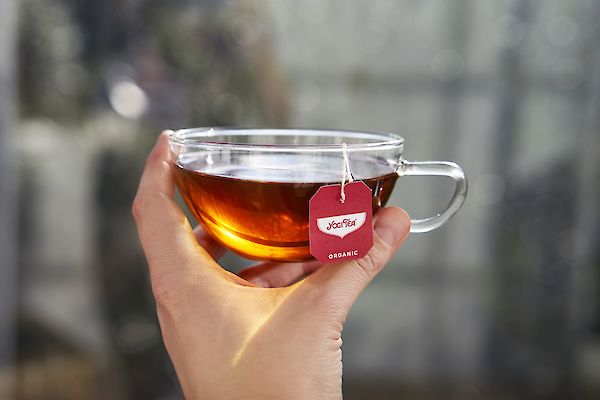Matcha: How well do you know it?
Matcha tea is the tea world's most exciting rediscovery of the 21st century. Here are three things about matcha that you may not know or be aware of.
Here are three things about matcha that you may not know or be aware of

As the trendy beverage of Matcha Latte, as an ingredient for creative and healthy recipes, in beauty products or as a beneficial supplement to a balanced diet – matcha tea is the tea world's most exciting rediscovery of the 21st century.
Matcha means "ground tea" and is among the finest of all tea types. It is made from the tender leaf tips of the tencha green tea plant, which are gently treated with steam after the harvest, dried and processed into the finest powder in granite stone mills.
We have collected three facts about matcha that you should know about.
Good matcha needs shade
Matcha requires not only a special production technique, but also specific conditions in order to grow. In addition to adequate pure water and rich soil, matcha tea needs one thing above all else: shade. Before the harvest (about 6 to 8 weeks), the tea bushes are covered with nets or bamboo mats and continue to grow "shaded." This prevents direct sunlight and therefore promotes the concentration of certain ingredients such as thein, chlorophyll and the amino acid theanine. This also influences the special mild taste and fascinating emerald green colour. The more brilliant the green colour, the fresher the tea.
An aid for meditation
Did you know that matcha originally came from China? Green tea was already finely ground there starting in the 6th century by the Buddhist Chan monks for medical purposes. According to the story, the influential Japanese abbot Myoan Eisai became familiar with Zen Buddhism and the tradition of drinking matcha tea around 1190 A.D. while on a study trip to China. He brought both of them back to his country.
While the drinking of matcha tea was somewhat forgotten in China, this special tea pleasure became increasingly popular in Japan and quickly spread among the monks. They were convinced of the tea's positive effect on the sense of well-being and drank it to support their long meditations. Due to its invigorating effect, matcha was used the Buddhist monks for opening the mind. They were also able to maintain the meditative state for a longer period of time and stayed focussed.
Matcha later became a very important component of the tea ceremony, which is still quite prominent to this day.
A healthy stimulant
In unfermented teas such as matcha, the tannins and flavonoids have a positive effect on the natural caffeine content: In contrast to black tea or coffee, the caffeine in matcha is bound to the tannins. As a result, it spreads gently and slowly in the body. So the invigorating effect of the tea lasts longer.
We use matcha in our YOGI TEA® Green Tea Matcha Lemon with fruity lemongrass and zesty lime. In combination with other choice herbs and spices, it creates a unique tea mixture that you must try.
We wish you much enjoyment!



